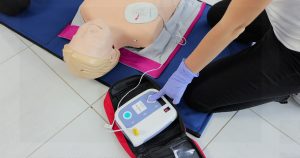
In a world where stress levels are on the rise and mental health awareness is growing, wellness workshops have become essential for promoting holistic well-being. Whether you’re a health professional, a wellness enthusiast, or a business owner looking to enhance employee wellness, planning a successful wellness workshop requires careful consideration and strategic planning. Here’s a comprehensive guide to help you navigate the process effectively.
1. Define Your Objective:
Begin by clarifying the purpose of your wellness workshop. Are you aiming to educate participants about mindfulness practices, promote physical fitness, or address specific health issues? Defining your objective will guide the content and structure of your workshop.
2. Know Your Audience:
Understanding the demographics, interests, and needs of your target audience is crucial for crafting relevant and engaging content. Conduct surveys or interviews to gather insights into their preferences and challenges, ensuring that your workshop resonates with participants.
3. Choose an Appropriate Venue:
Select a venue that aligns with the theme and size of your workshop. Consider factors such as accessibility, ambiance, and facilities needed for activities. Whether it’s a serene retreat center, a community hall, or a corporate boardroom, the venue should foster a conducive environment for learning and relaxation.

4. Collaborate with Experts:
Enlist the support of qualified professionals or practitioners in the field of wellness. Inviting guest speakers, fitness trainers, nutritionists, or psychologists can enrich the content of your workshop and provide diverse perspectives. Their expertise will add credibility and value to the event.
5. Develop Engaging Content:
Design a structured agenda with a mix of informative presentations, interactive activities, and practical demonstrations. Incorporate a variety of learning formats such as group discussions, hands-on workshops, and experiential exercises to cater to different learning styles. Keep the content concise, relevant, and engaging to maintain participants’ interest throughout the workshop.
6. Promote Effective Marketing:
Create a compelling marketing strategy to attract participants to your workshop. Utilize online platforms, social media channels, and email newsletters to spread the word. Leverage partnerships with local organizations, wellness influencers, or corporate sponsors to extend your reach and enhance visibility.
7. Provide Necessary Resources:
Equip participants with the tools and resources they need to implement wellness practices in their daily lives. Prepare handouts, worksheets, or digital materials that reinforce key concepts and encourage continued learning beyond the workshop. Consider offering take-home kits, exercise equipment, or wellness journals as tangible reminders of their experience.
8. Foster a Supportive Environment:
Create a welcoming and inclusive atmosphere where participants feel comfortable sharing their thoughts and experiences. Encourage open dialogue, active participation, and mutual respect among attendees. Cultivate a sense of community and support to foster meaningful connections and long-term engagement.
9. Gather Feedback and Evaluate:
After the workshop, solicit feedback from participants to assess the effectiveness of the event and identify areas for improvement. Use surveys, interviews, or evaluation forms to gather qualitative and quantitative data. Analyze the feedback carefully to refine your approach and enhance future workshops.
10. Follow-Up and Sustain Engagement:
Maintain communication with participants after the workshop to nurture ongoing engagement and support their wellness journey. Share resources, follow-up materials, or invitations to future events to keep them motivated and informed. Cultivate a sense of continuity and accountability to ensure lasting impact beyond the workshop.








